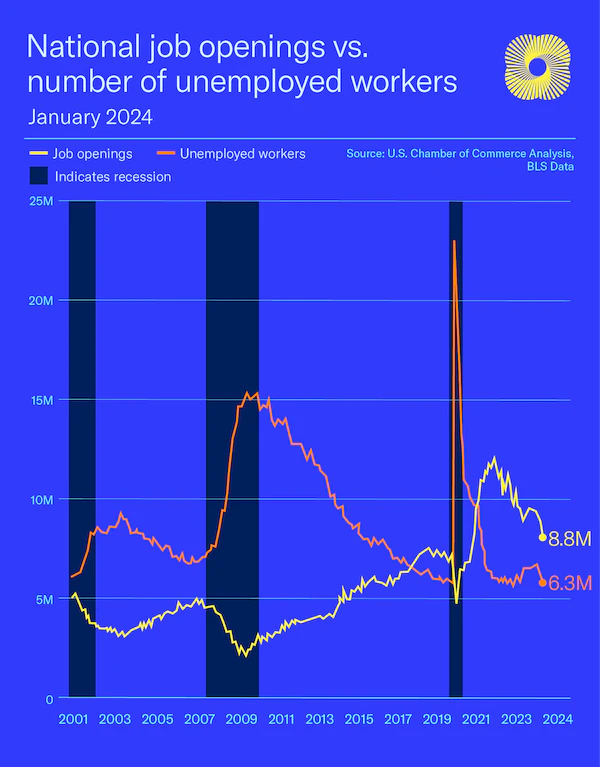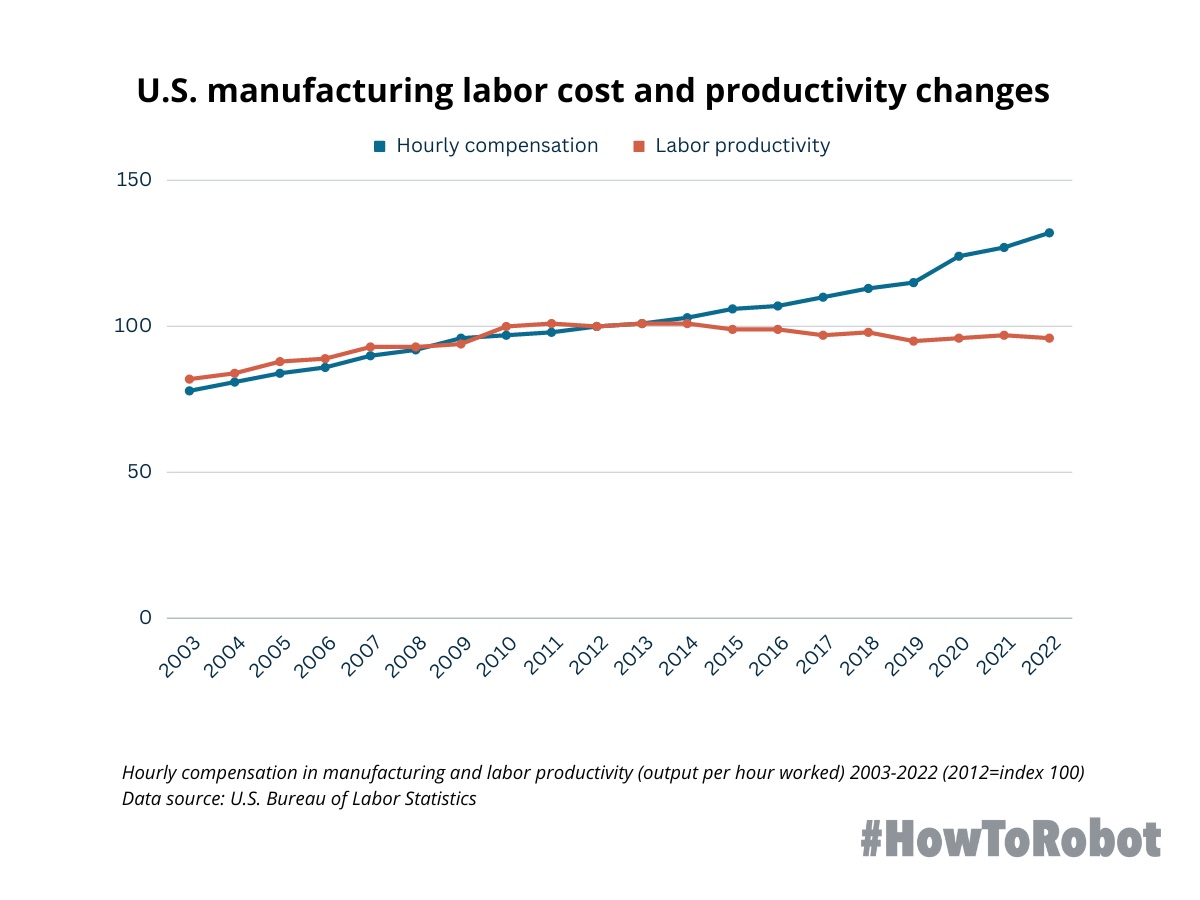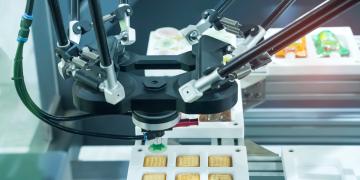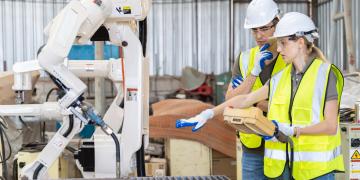By Søren Peters, CEO of HowToRobot; and Mette Klausen, Platform Director of HowToRobot
What is the outlook for the robotics market in 2024?
Last year left many confused about what to expect. Global political unrest escalated even further, supply chains were again disrupted, and interest rates kept rising throughout the year. Unsure about how consumers would respond, many businesses decided to put investments on hold and save cash. This could also be seen in the 29% drop in robot orders in the US in the first half of 2023, as reported by The Association for Advancing Automation (A3).
While building a “war chest” is an understandable short-term response against the growing business risks, it may not work in the long run. However much we would prefer the world to go back to the ‘normal’ we knew before the ‘20s, it does not seem likely to happen anytime soon. The Economist recently described 2024 in terms of a “second cold war” and “multipolar disorder”, and while these are harsh words, they do suggest that businesses better get used to the way of the world. Simply waiting for things to get better could have long prospects.
2024 will, therefore, likely be the year when we see more businesses make strategic investments aimed at providing them a favorable edge to operate in this new environment. We expect automation to be one of the investment areas – for several reasons that are becoming harder to ignore.
Businesses are reducing their supply chain dependencies
One of the consequences of the growing global political unrest is that businesses are seeking to reduce their exposure to global supply chains. The Houthi attacks on cargo ships in the Red Sea are just the most recent example of how political events are disrupting supply chains. In this case, Tesla and Volvo announced they would temporarily suspend production in Europe due to a lack of gearboxes and other components. Undoubtedly, others might be asking if they are next.
While robots can’t make gearboxes magically appear, they are key to moving the production of such components closer to the OEMs that depend on them. Reshoring production often leads to growing labor expenses, which automation can help offset. Without it, reshoring production could prove too costly.
There are already signs of a “decoupling” of supply chains underway, with the construction boom of new manufacturing facilities in the US being one of the most prominent examples. Companies are now constructing manufacturing facilities at a higher rate than any other property type in the US. Moving these manufacturing operations back to the US will, in addition, require substantial investments in automation.
Labor shortages: The problem that won’t go away
Labor shortages contributed to record robot sales in the US in 2022 as manufacturers, struggling to find enough people for hire, sought to automate instead. While the shortages eased last year, the gap between labor supply and demand remains. As of November 2023, 547,000 positions remained to be filled in US manufacturing, and the job opening rate was still above pre-pandemic levels. In the EU, labor shortages were still a limiting factor for 22% of manufacturing businesses. It seems likely the challenge will continue in 2024 – and beyond.
Some of the labor shortages may be caused by events in recent years. Still, the underlying and growing issue is structural and applies to both the US and Europe according to reports from the U.S. Chamber of Commerce and the European Commission. That means it won’t go away anytime soon. As the number of workers retiring accelerates and fewer young people step in, businesses have to automate. In our experience, robots are not taking jobs away from workers but rather making sure that businesses can continue operating when it’s difficult to hire. Unions are also realizing this, now urging the industry to automate to safeguard jobs in the long run. The sooner businesses start automating, the more ahead of the competition they will be once the challenge deepens.

Productivity is still king
Producing more at a lower cost is one of the key reasons for businesses to automate this year, especially considering the big focus on cost control at the moment.
The growing inflation last year also meant many employers raised salaries substantially. In the US, hourly compensation in manufacturing rose by 4.5% in Q3 of last year compared to a year earlier. The increasing labor costs will put substantial pressure on manufacturers in 2024 to advance productivity further. This also means that businesses will have higher expectations for robotics technology and its performance than in previous times. Already last year, we saw an increasing number of businesses beginning to articulate performance goals to automation suppliers in a much more structured manner. In 2024, this will be even more common – eventually leading to better-performing solutions and higher levels of productivity.

The outcome? A more balanced market
It’s not necessarily a bad thing that businesses are tightening their belts. Such times often lead to a renewed focus on the things that are most essential. We are already seeing this focus in robotics, resulting in a more balanced market.
It seems we are past the early days of technology hype, with an increasingly rational dialogue now taking place between buyers and sellers. It’s less about technology for the sake of technology and more about what’s in it for the individual business – and how to get started.
The challenges for the robotics market in 2024 are also more of a practical nature: How and where can businesses find the right automation solution and suppliers to provide it? How do they ensure it solves their problem? And how can they best finance the investment in a high-interest environment?
We are already seeing more and more sourcing platforms in robotics and automation emerge and joining HowToRobot in addressing these questions and educating the market. This again shows how the robotics market is maturing and becoming easier to navigate for end-users.
Ultimately, the only thing that will provide certainty for businesses in uncertain times – is knowledge about how to deal with it.
--
Søren Peters is CEO and Mette Klausen Platform Director of HowToRobot.com – a global platform that makes it quick, safe, and simple to get started with automation. HowToRobot provides a structured process for businesses that want to automate, helping them specify projects and get a range of solution offers through its global network of vetted robot and automation providers.











